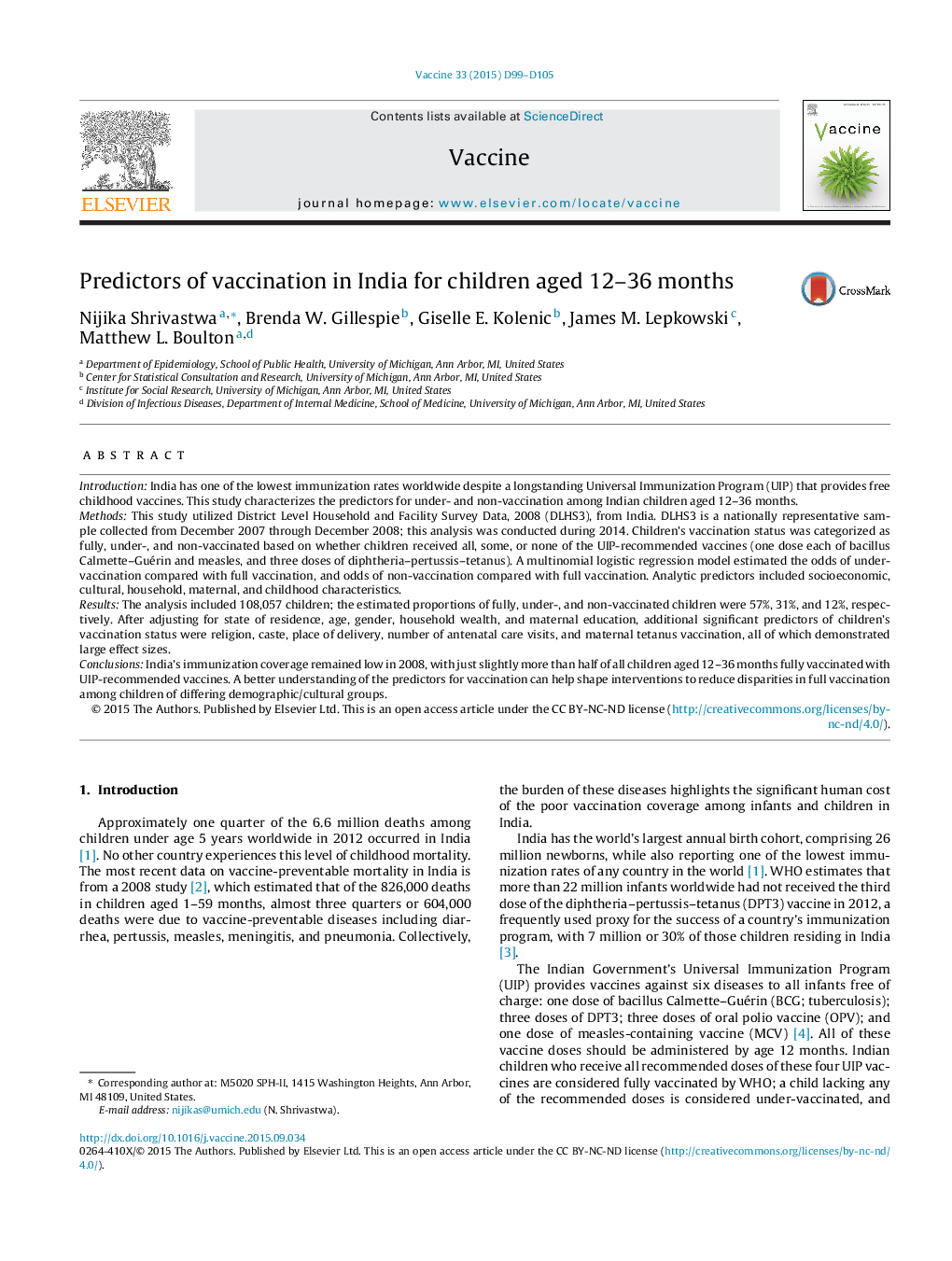| کد مقاله | کد نشریه | سال انتشار | مقاله انگلیسی | نسخه تمام متن |
|---|---|---|---|---|
| 2402337 | 1102774 | 2015 | 7 صفحه PDF | دانلود رایگان |
IntroductionIndia has one of the lowest immunization rates worldwide despite a longstanding Universal Immunization Program (UIP) that provides free childhood vaccines. This study characterizes the predictors for under- and non-vaccination among Indian children aged 12–36 months.MethodsThis study utilized District Level Household and Facility Survey Data, 2008 (DLHS3), from India. DLHS3 is a nationally representative sample collected from December 2007 through December 2008; this analysis was conducted during 2014. Children's vaccination status was categorized as fully, under-, and non-vaccinated based on whether children received all, some, or none of the UIP-recommended vaccines (one dose each of bacillus Calmette–Guérin and measles, and three doses of diphtheria–pertussis–tetanus). A multinomial logistic regression model estimated the odds of undervaccination compared with full vaccination, and odds of non-vaccination compared with full vaccination. Analytic predictors included socioeconomic, cultural, household, maternal, and childhood characteristics.ResultsThe analysis included 108,057 children; the estimated proportions of fully, under-, and non-vaccinated children were 57%, 31%, and 12%, respectively. After adjusting for state of residence, age, gender, household wealth, and maternal education, additional significant predictors of children's vaccination status were religion, caste, place of delivery, number of antenatal care visits, and maternal tetanus vaccination, all of which demonstrated large effect sizes.ConclusionsIndia's immunization coverage remained low in 2008, with just slightly more than half of all children aged 12–36 months fully vaccinated with UIP-recommended vaccines. A better understanding of the predictors for vaccination can help shape interventions to reduce disparities in full vaccination among children of differing demographic/cultural groups.
Journal: Vaccine - Volume 33, Supplement 4, 27 November 2015, Pages D99–D105
